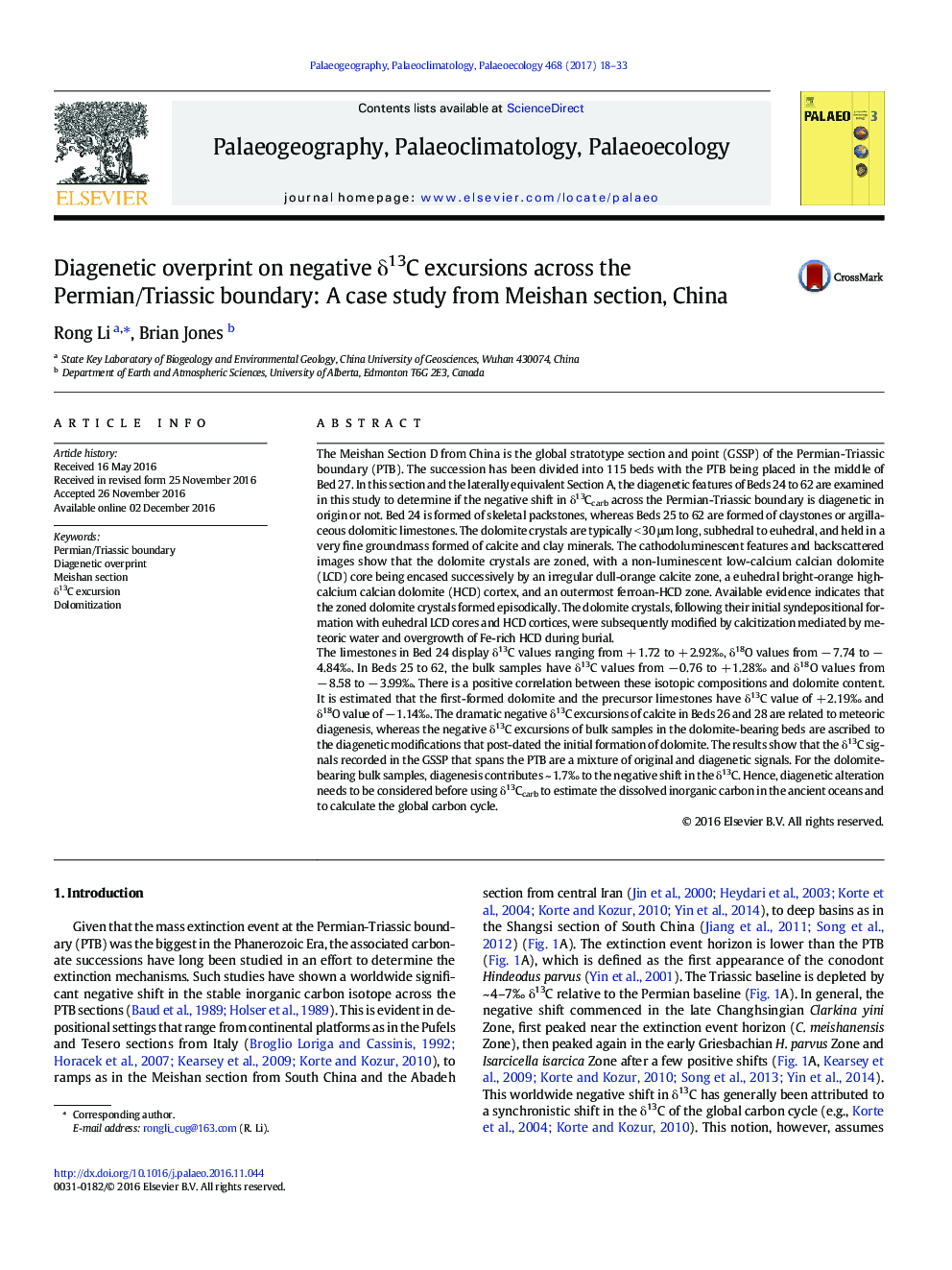| Article ID | Journal | Published Year | Pages | File Type |
|---|---|---|---|---|
| 5755759 | Palaeogeography, Palaeoclimatology, Palaeoecology | 2017 | 16 Pages |
Abstract
The limestones in Bed 24 display δ13C values ranging from + 1.72 to + 2.92â°, δ18O values from â 7.74 to â 4.84â°. In Beds 25 to 62, the bulk samples have δ13C values from â 0.76 to + 1.28â° and δ18O values from â 8.58 to â 3.99â°. There is a positive correlation between these isotopic compositions and dolomite content. It is estimated that the first-formed dolomite and the precursor limestones have δ13C value of + 2.19â° and δ18O value of â 1.14â°. The dramatic negative δ13C excursions of calcite in Beds 26 and 28 are related to meteoric diagenesis, whereas the negative δ13C excursions of bulk samples in the dolomite-bearing beds are ascribed to the diagenetic modifications that post-dated the initial formation of dolomite. The results show that the δ13C signals recorded in the GSSP that spans the PTB are a mixture of original and diagenetic signals. For the dolomite-bearing bulk samples, diagenesis contributes ~ 1.7â° to the negative shift in the δ13C. Hence, diagenetic alteration needs to be considered before using δ13Ccarb to estimate the dissolved inorganic carbon in the ancient oceans and to calculate the global carbon cycle.
Keywords
Related Topics
Physical Sciences and Engineering
Earth and Planetary Sciences
Earth-Surface Processes
Authors
Rong Li, Brian Jones,
